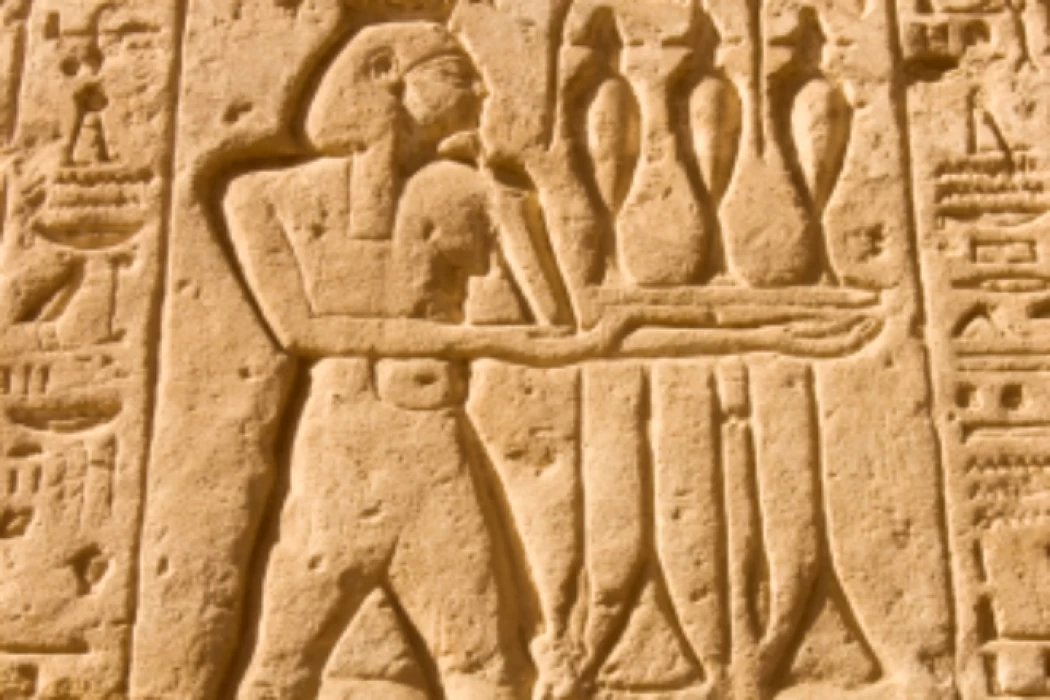
O Deus do Nilo Hapi | O Deus da Fertilidade | O Deus do Norte e do Sul
Os historiadores dizem que Hapi (Hapy, Hap, Hep) era muito provavelmente um nome pré-histórico para o próprio rio Nilo. Aconteceu quando as pessoas começaram a adorá-lo como a divindade da inundação anual do rio. Mais tarde, as pessoas mudaram o nome para Nilo ou Itero, que significa "rio". Assim, os antigos egípcios também mudaram o nome do deus do Nilo para "O rio" ou Itero.
Para melhor compreender isto, a palavra egípcia "Nwy" significa água. O nome "Nilo" provém da corrupção grega de "Neilos", derivada de "Nwy". As pessoas deram a Hapi outros títulos, incluindo "Senhor dos Peixes e das Aves do Pântano" e "O Verde das Duas Margens". As pessoas também o chamaram "o fabricante da cevada e do trigo" e "o mestre do rio que traz a vegetação". Tal como outras divindades romanas e gregas, a mitologia acredita que Hapi tem uma personalidade benevolente e de boa índole. Contudo, ele também tinha um lado negro que poderia causar uma destruição imprevisível. As pessoas também afirmam que a divindade trabalhou sob a influência do faraó, que era também uma divindade viva. Além disso, os textos descrevem-no como "Siddik Geb", o deus egípcio da terra, e "Rab Nabar", o deus dos cereais.
A inundação do Nilo devido à "inundação" foi tão vital para a vida e economia do Egipto que os antigos basearam as suas vidas à sua volta. Todos os anos, uma enorme quantidade de água transborda as margens do Nilo e deixa lodo preto. Apoiará a agricultura no Egipto e manterá as pessoas alimentadas.
A história refere-se a esta inundação anual como a "Chegada de Hapi". As pessoas celebraram este evento com grandes festivais e procissões organizadas no rio. Seguidores de todo o mundo viajavam para os santuários Hapi do Elefantino e Assuão. Rezavam pela quantidade certa de cheias e lodo para os ajudar a cultivar as suas colheitas.
Historians say that Hapi (Hapy, Hap, Hep) was most likely a prehistoric name for the Nile River itself. It happened when people began to worship him as the deity of the annual flood of the river. Later on, people changed the name to Nile or Itero, which means "river". Hence, the ancient Egyptians also changed the name of the Nile god to “The River” or Itero.
To better understand this, the Egyptian word “Nwy” means water. The name “Nile” comes from the Greek corruption of “Neilos,” derived from “Nwy.” People gave Hapi other titles, including "Lord of the Fish and the Birds of the Marsh" and "The Green of the Two Banks". People also called him “the maker of barley and wheat” and “the master of the river that brings vegetation.” Like other Roman and Greek deities, mythology believes Hapi to have a benevolent and good-natured personality. However, he also had a dark side that could cause unpredictable destruction. People also claim that the deity worked under the influence of the pharaoh, who was also a living deity. Moreover, the texts describe him as “Siddik Geb,” the Egyptian god of the earth and “Rab Nabar,” the god of grain.
The flooding of the Nile due to the "Flood" was so vital to the life and economy of Egypt that the ancients based their lives around it. Every year a huge amount of water overflows the banks of the Nile and leaves black silt. It will support agriculture in Egypt and keep people fed.
The history refers to this annual flood as the "Arriving of Hapi". People celebrated this event with great festivals and organized processions on the river. Followers from all over the world would travel to the Hapi shrines of the Elephantine and Aswan. They were praying for the right amount of flood and silt to help them grow their crops.
One can only imagine the respect and devotion they would have for the Nile flood god. Hapi's importance leads to some people worshiping him above the powerful sun god Ra. The deity controlled the waters of the Nile itself and thus affected the well-being of millions of people.
People gave or removed some Hapi traits according to the region in which they live. In Lower Egypt, the god was dressed in papyrus, and was attended by frogs. In contrast, Upper Egypt had an abundance of lotuses and crocodiles. Hence, the people of the region associated the symbols of both with Hapi. People rarely used the blue hippopotamus to depict the deity.
Many images depict Hapi as carrying offerings of food or pouring water from a jug. Nineteenth-century iconography depicts hapi as a pair of figures connecting and linking together the stems of two plants. These plants represent Upper and Lower Egypt. This description connects the two sections around the union symbol.
The people of Hapi in Upper Egypt called Hap-Meht, while the Lower Egyptians called Hapi Hap-Reset. One can find this symbolic representation carved into the base of statues of the seated pharaoh. For example, one can find a stone carving of Hapi in the Luxor Temple on either side of a seated statue of Ramesses II. Also, you can spot images of Hapi on the Colossus of Memnon in the Temple of Amenhotep III.
There are no temples for the god Hapi, but one can find many statues and reliefs of the god in the temples of other gods. People worshiped the god all over the land of Egypt, but they revered him most in Swenet and Gebel el-Silsilah. The people worshiped Khnum, Satit and Ankot in Elephantine with the god Hapi. His priests on Elephantine Island had a nilometer to measure and monitor the levels of the Nile.
Statues of the god Hapi are found in many places, the most famous of which is the statue in Britain. Another statue I extracted myself from the Temple of Ramses II in Akhmim is a magnificent representation of Egypt's southern and northern faces.
Another statue is located in the Temple of Abu Simbel. Murals and images of Hapi are found in all Egyptian temples, given his sanctity to all Egyptians and his association with the sacred river, which Pharaonic legends said was the result of the tears of the goddess Isis.















